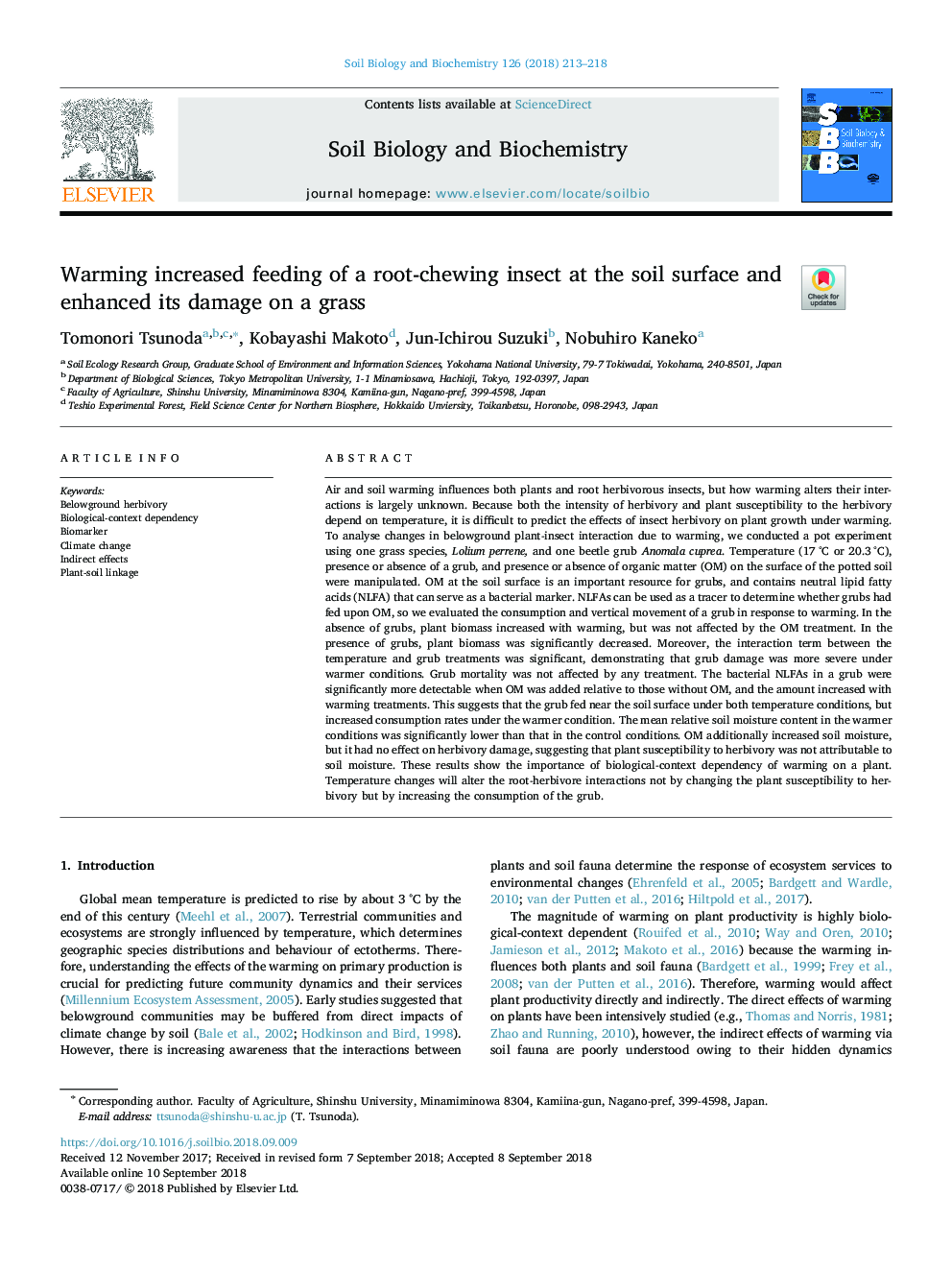| Article ID | Journal | Published Year | Pages | File Type |
|---|---|---|---|---|
| 9954273 | Soil Biology and Biochemistry | 2018 | 6 Pages |
Abstract
Air and soil warming influences both plants and root herbivorous insects, but how warming alters their interactions is largely unknown. Because both the intensity of herbivory and plant susceptibility to the herbivory depend on temperature, it is difficult to predict the effects of insect herbivory on plant growth under warming. To analyse changes in belowground plant-insect interaction due to warming, we conducted a pot experiment using one grass species, Lolium perrene, and one beetle grub Anomala cuprea. Temperature (17â¯Â°C or 20.3â¯Â°C), presence or absence of a grub, and presence or absence of organic matter (OM) on the surface of the potted soil were manipulated. OM at the soil surface is an important resource for grubs, and contains neutral lipid fatty acids (NLFA) that can serve as a bacterial marker. NLFAs can be used as a tracer to determine whether grubs had fed upon OM, so we evaluated the consumption and vertical movement of a grub in response to warming. In the absence of grubs, plant biomass increased with warming, but was not affected by the OM treatment. In the presence of grubs, plant biomass was significantly decreased. Moreover, the interaction term between the temperature and grub treatments was significant, demonstrating that grub damage was more severe under warmer conditions. Grub mortality was not affected by any treatment. The bacterial NLFAs in a grub were significantly more detectable when OM was added relative to those without OM, and the amount increased with warming treatments. This suggests that the grub fed near the soil surface under both temperature conditions, but increased consumption rates under the warmer condition. The mean relative soil moisture content in the warmer conditions was significantly lower than that in the control conditions. OM additionally increased soil moisture, but it had no effect on herbivory damage, suggesting that plant susceptibility to herbivory was not attributable to soil moisture. These results show the importance of biological-context dependency of warming on a plant. Temperature changes will alter the root-herbivore interactions not by changing the plant susceptibility to herbivory but by increasing the consumption of the grub.
Related Topics
Life Sciences
Agricultural and Biological Sciences
Soil Science
Authors
Tomonori Tsunoda, Kobayashi Makoto, Jun-Ichirou Suzuki, Nobuhiro Kaneko,
